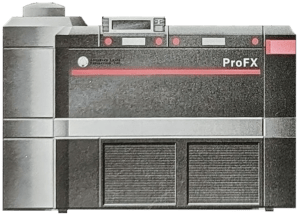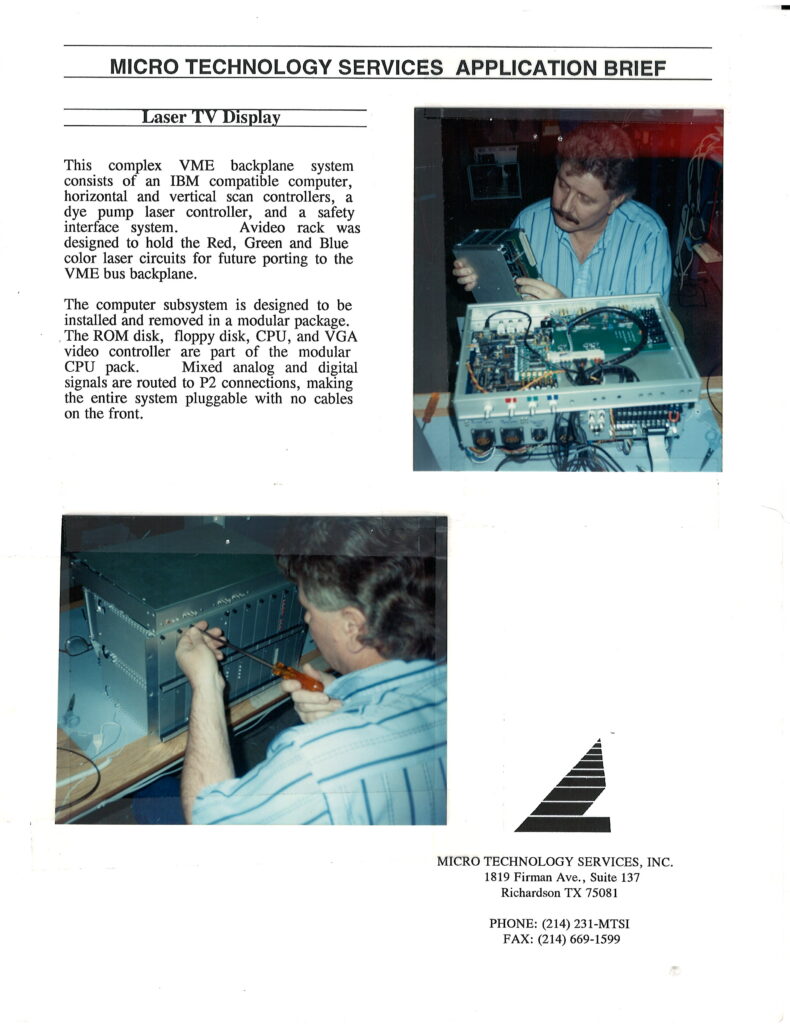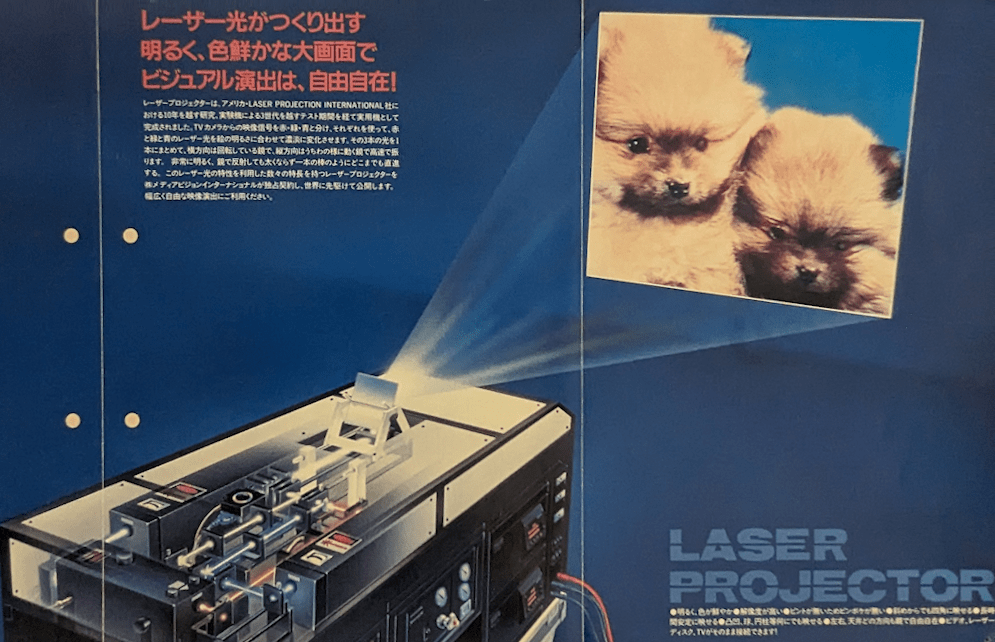High-Powered Projection With Laser Beams
Stadium-sized imagery in sharp focus
There’s nothing like blasting out an image the size of a behemoth to light up a dark room. Years ago, a Dallas-based company came to MTSI to help develop a new generation of laser video projectors with the technology of stadium-sized video with the impact of laser light.
This enabled enormous depth of field at the time — extending perfectly focused projection onto non-flat, irregularly-shaped and moving surfaces.

Known as ProFx, the multi-plane imager had a picture positioning system called the Image Mover to adjust the picture size, orientation and position in X+Y using the machine’s on-board computer. Any video picture could be set to appear at any line-of-sight position around an auditorium or stadium.
One system could project a 60-foot-wide picture on a screen at one moment, and then six-feet-wide on a glass plate elsewhere in the display arena a split second later. The system also generated around 15 watts of “spare” white laser light which to create special effects during synchronized multi-media projection. Then there were automated pan-and-tilt features that could move an image from one surface to another, or from one shape to another, in perfect focus and sync with a source time code.
The device could also electronically adjust the variable aspect ratio from any configuration from 1:1 to 2:1. Built-in custom presents allowing switching between ratios including 4:3 and 16:9.
Mixed analog
Solution
MTSI developed a complex VME backplane system consisting of an IBM-compatible computer, horizontal and vertical scan controllers, a dye pump laser controller, and a safety interface system. A video rack was designed to hold the red, green, and blue color laser circuits for future porting to the VME bus backplane.
The computer subsystem was designed to be installed and removed in a modular package. The ROM disk, floppy disk, CPU, and VGA video controller were part of the modular CPU pack. Mixed analog and digital signals were routed to P2 connections, making the entire system pluggable with no cables on the front.
The machine was… impressive. The ProFx multi-plane imager was designed for big productions and cost $500,000 per unit. The system went on to be sold and rented out throughout North America, Europe and Japan. One user, London-based Laserpoint DJS, put on a spectacle in an industrial-themed showroom for production companies, designers, architects, exhibition promoters, nightclub operators and all the rest.


Robert Beckhusen
Robert Beckhusen is a case studies and content marketing editor for Micro Technology Services.
